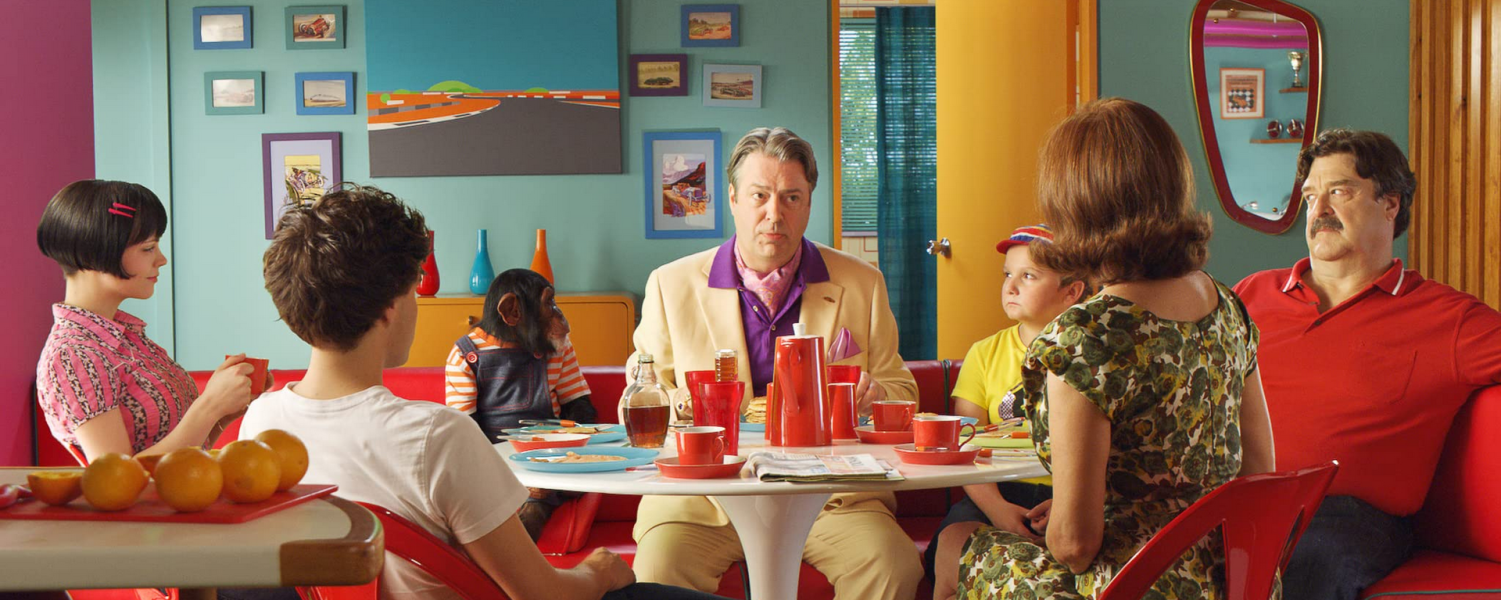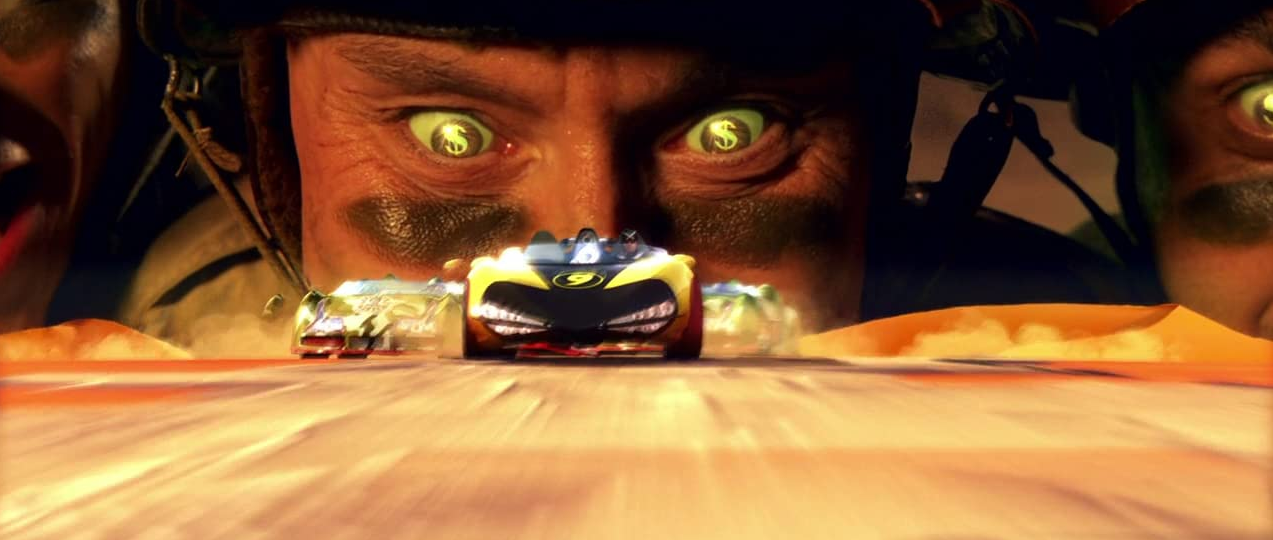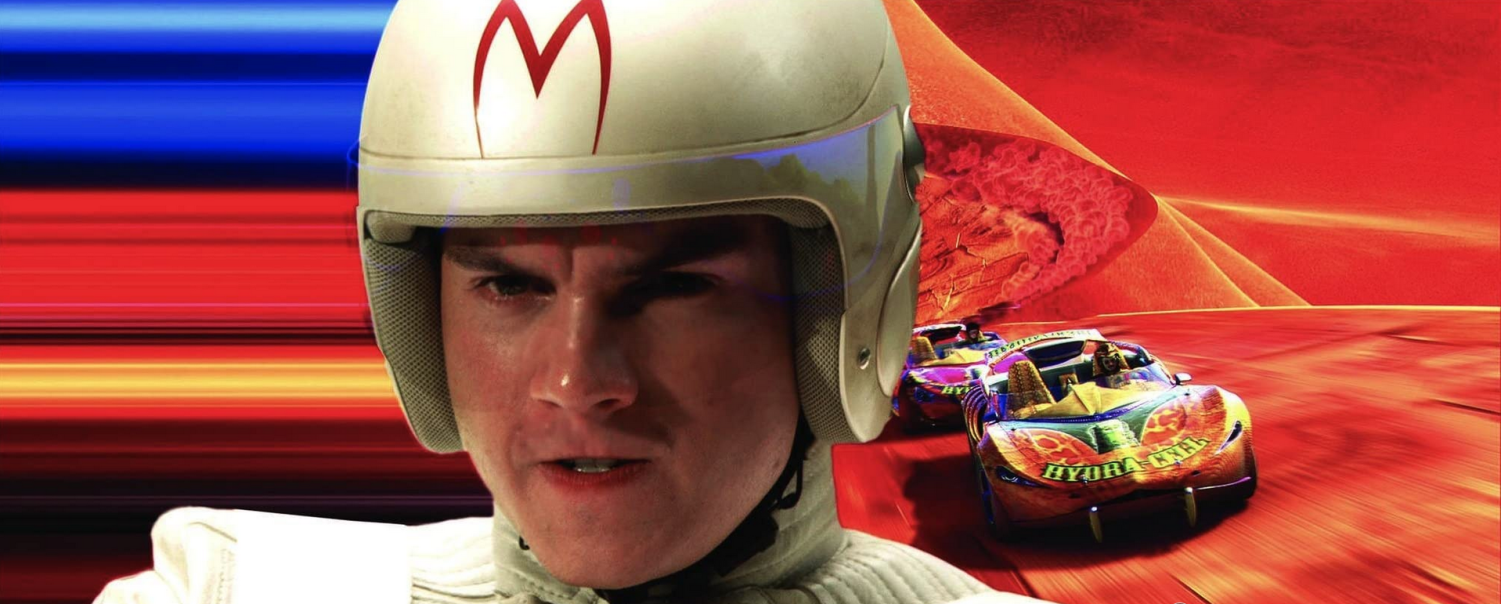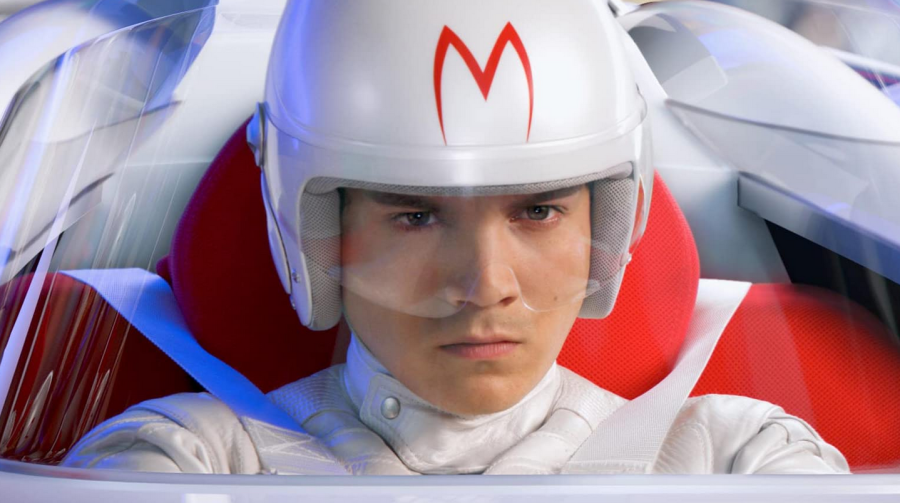“Speed Racer” was ahead of its time, and now it can shine
April 26, 2023
When “Iron Man” was released 15 years ago, it began a huge change in the cinema landscape, snowballing the industry into where it is at today. A week after “Iron Man” was released, “Speed Racer” opened and bombed at the box office with little to no recovery to make back its huge budget.
As comic book films started heading in a more realistic direction to avoid mockery from audiences who thought superheroes were lame, the Wachowski sisters released a charming adaptation of the beloved “Speed Racer” anime. Audiences at the time were not on board for an earnest attempt to bring a cartoon to life in an innovative way, but with 15 years of hindsight, it might be time for the public to come around on this extravagant flop.
Speed Racer (Emile Hirsch) is a young race car driver who is intensely passionate about racing. He lives with his family that runs a race car building business, and whenever he isn’t racing, he is spending time with his girlfriend, Trixie (Christina Ricci). When he learns the world of racing is more corrupt and rigged than it seems, Speed becomes disillusioned about his biggest passion. With the help of his family and a mysterious agent, Racer X (Matthew Fox), Speed must learn how to reignite his love for racing and take down the evil corporate sponsors corrupting it.

From the very first moments of this film, the negative reaction seems justified. The uncanny nature of the hyper unrealistic backgrounds with green screen actors would remind any audience member of the “Star Wars” prequels. There is no camera focus in the entire film, meaning background elements and characters look flat against the main element of each shot. It’s an abrasive viewing experience at first because everything looks like a weird cartoon with real actors.
That’s why this film is so brilliant.
The Wachowski sisters practically redefined action cinema in their second film, “The Matrix,” by taking elements from kung-fu movies and anime to create a new and exciting mainstream action film. Viewing that film like it’s a Japanese cartoon makes so much of its visual language make sense. So, what better follow-up to “The Matrix” trilogy than to make a live-action adaptation of one of the most iconic anime of all time?

“Speed Racer” is the most successful live-action adaptation of an anime to this day. It isn’t a pre-established series being morphed into a stilted Hollywood version of itself. The Wachowski sisters developed a style of filmmaking that morphs the blockbuster aspects into a more cartoonish visual language. The method of making the camera focus on everything in a shot to make it look as flat as possible, and the use of CGI to make things like dust clouds look extremely unrealistic only enhance the film.
It keeps everything we love about the medium of animation without stripping it away to make it more homogeneous with every other studio action movie.
With flashy visuals and a pretty simplistic underdog story, it might seem like this film lacks substance, but it is bursting at the seams with artistic intent in its narrative. The whole film is a transparent analogy for filmmaking, or creating art in general. It’s a tale about corporations using the art you believed in to twist it into something more sinister and profit-driven.

For two directors to make this the main focus in a movie that is beholden to Warner Bros. for the budget and the rights of the intellectual property of “Speed Racer” is more than a bold move. The Wachowski sisters are speaking against the cynical nature of content creation to make something worthwhile and meaningful in the Hollywood system.
Even though “Speed Racer” bombed back in the day, it holds up better today than most of its contemporaries. It actively pushed the barriers of what a film could do and look like. It wasn’t using a pre-established franchise to make a bland realistic version of the series so energetic and exciting. It plays into those iconic elements that made “Speed Racer” popular in Japan and the United States.
More than anything, “Speed Racer” excels as a pure form of love for the art of filmmaking. It’s one of my favorite films of all time, and I cannot recommend it enough. It’s a triumph of modern filmmaking that has yet to be replicated.








